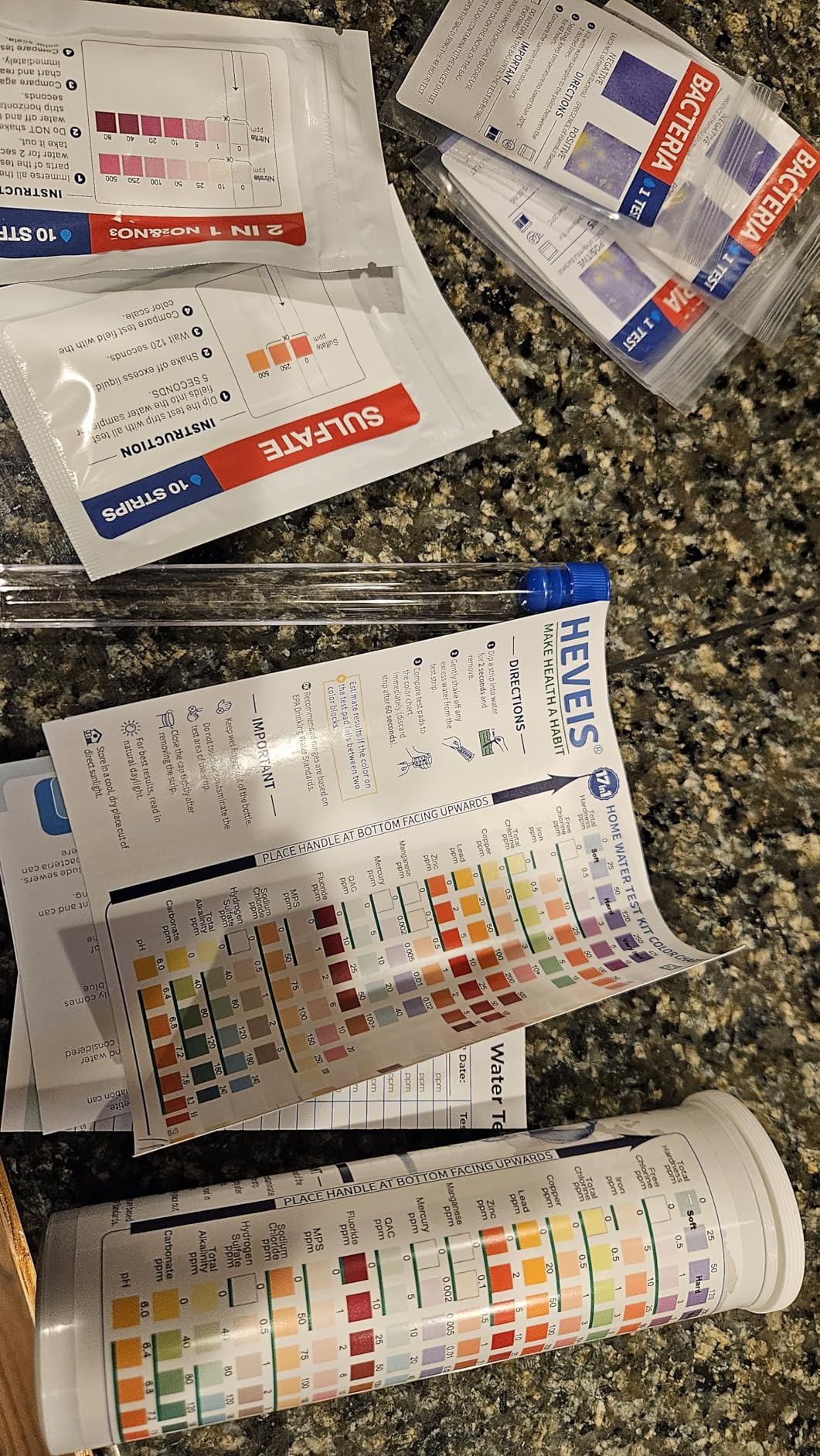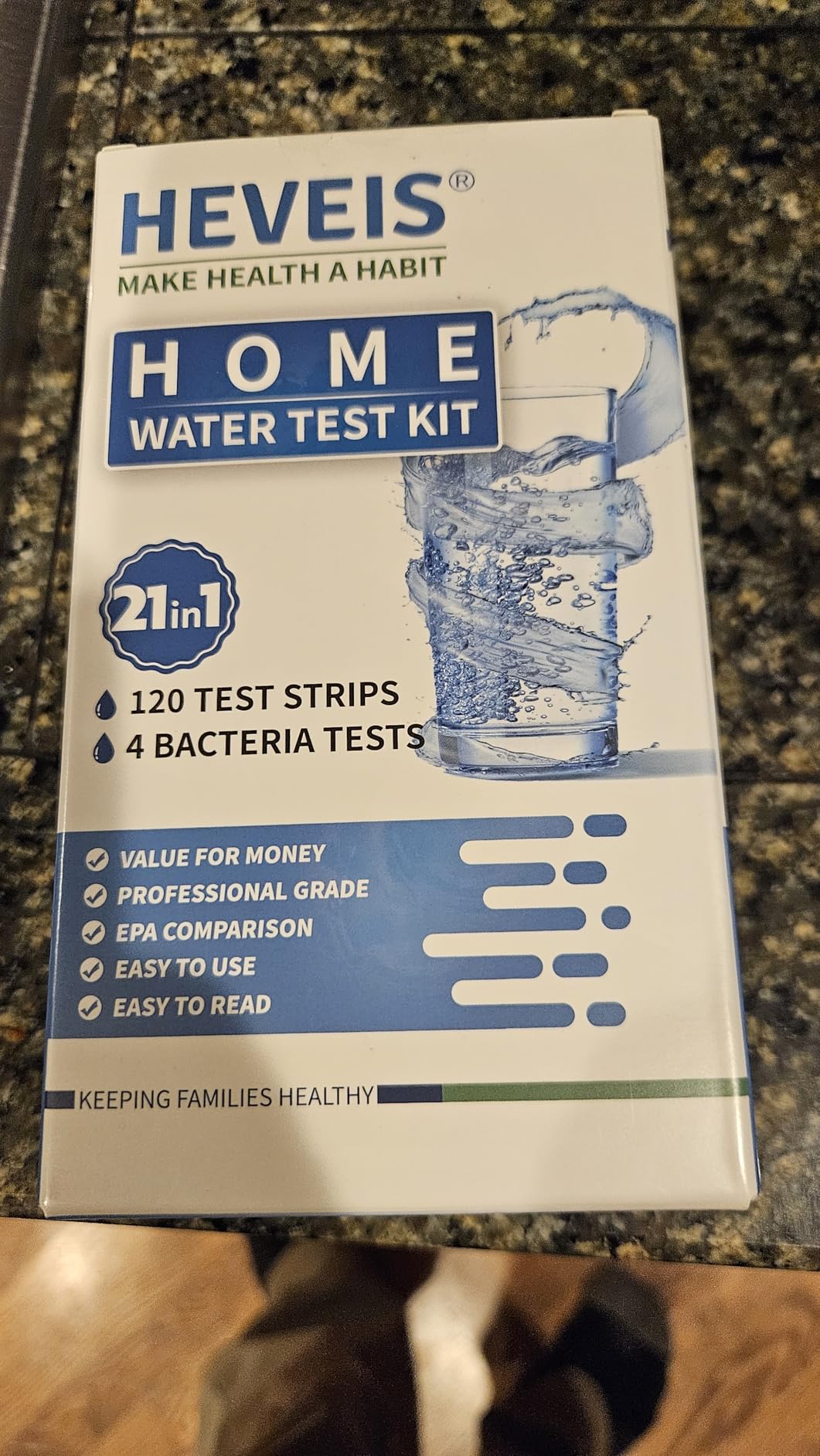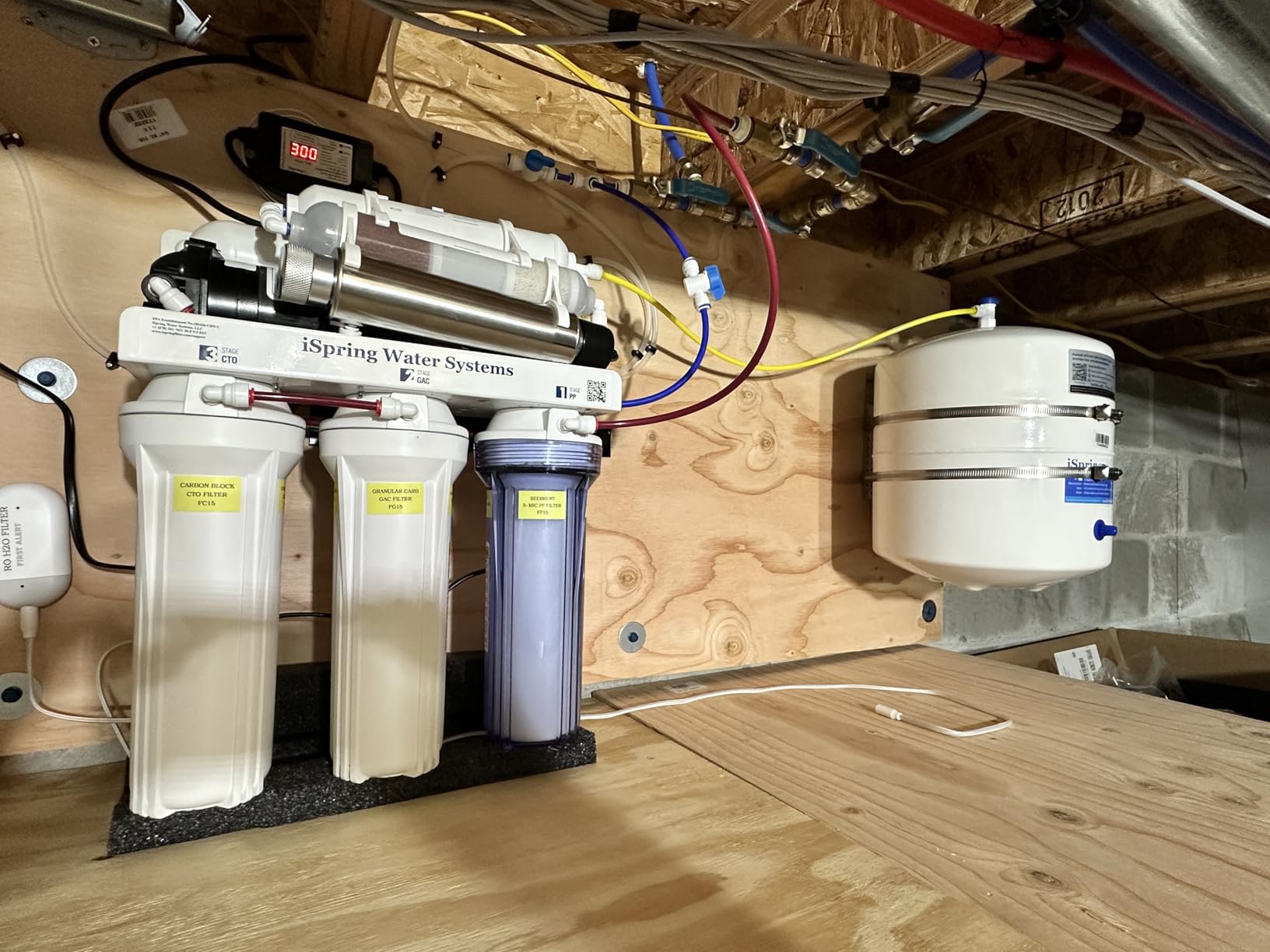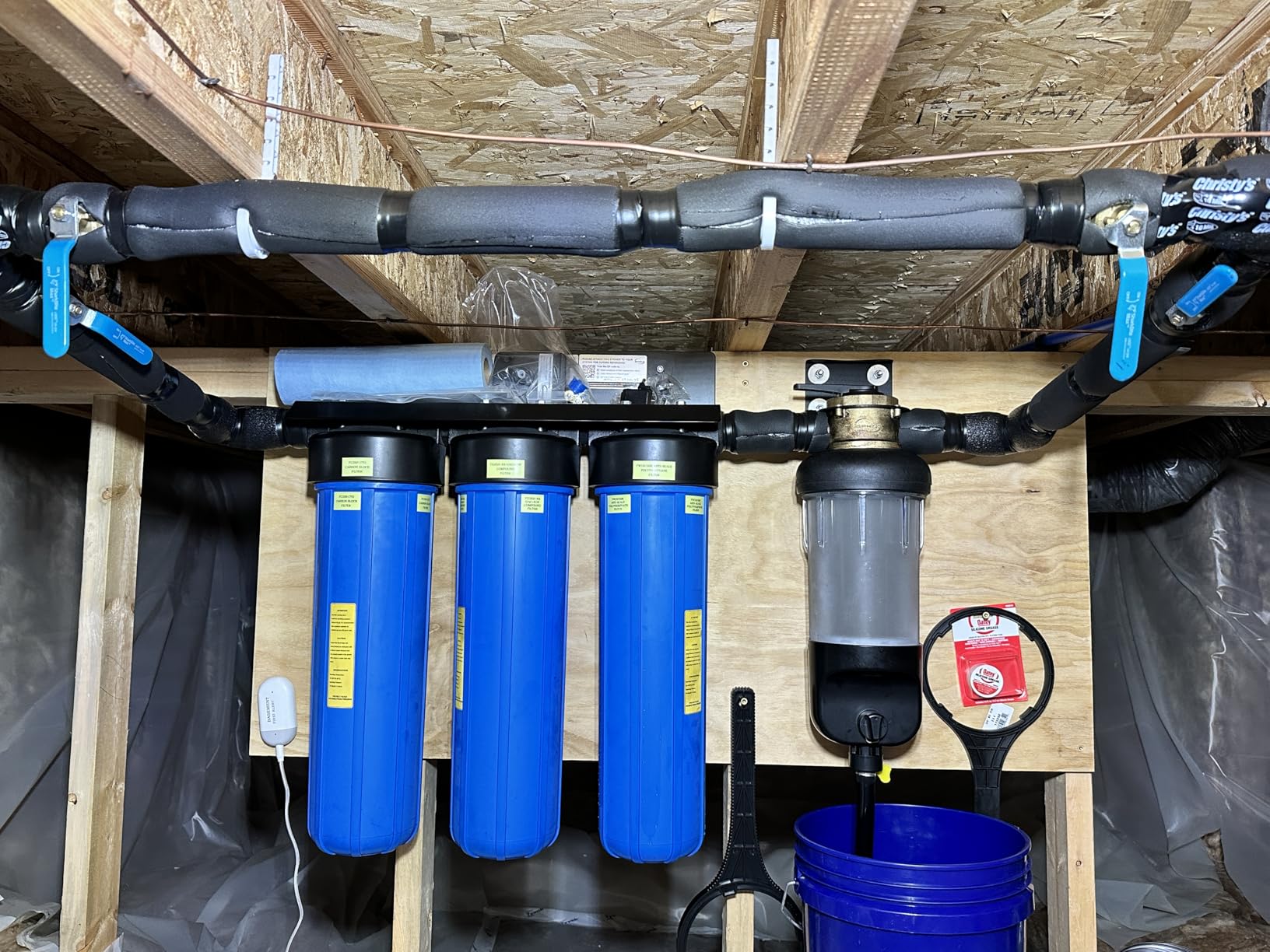If you're dealing with well water that smells like rotten eggs, you're not alone. This frustrating problem affects thousands of homeowners across rural America, turning daily routines into unpleasant experiences. I've seen families who avoid showering at home, won't cook with tap water, and feel embarrassed when guests visit.
How to get rid of stinky well water: The most effective solution is shock chlorination with calcium hypochlorite pellets, which kills sulfur bacteria and eliminates hydrogen sulfide gas. For permanent solutions, install an aeration system or activated carbon filter specifically designed to remove hydrogen sulfide.
Contents
After helping my neighbors troubleshoot their well water issues for over 15 years, I've learned that most cases can be resolved without expensive professional services. The key is identifying the exact source and choosing the right treatment method for your specific situation.
In this guide, I'll walk you through everything you need to know about eliminating that awful sulfur smell from your well water, including testing methods, treatment options, and maintenance strategies to keep your water fresh and clean.
The distinctive rotten egg smell in well water is caused by hydrogen sulfide gas (H₂S), a colorless gas produced when sulfur bacteria break down natural sulfates in groundwater. This process typically occurs in oxygen-deprived environments like deep wells, plumbing systems, or water heaters.
Sulfur bacteria naturally exist in most groundwater but become problematic when they multiply rapidly. This happens especially in wells with low oxygen levels, where the bacteria thrive and produce hydrogen sulfide as a waste product. The gas dissolves in your water and releases that characteristic smell whenever you turn on a faucet.
Hydrogen Sulfide (H₂S): A colorless gas that produces a distinctive rotten egg odor at concentrations as low as 0.5 parts per million (ppm). While generally not harmful at typical household levels, it can corrode plumbing and create unpleasant living conditions.
Beyond the unpleasant odor, hydrogen sulfide can cause other problems in your home. It tends to corrode metal pipes and plumbing fixtures, leading to leaks and expensive repairs. The gas can also tarnish silverware and stain plumbing fixtures black or gray.
Health-wise, hydrogen sulfide is rarely dangerous at concentrations found in household wells. However, extremely high levels (above 10 ppm) can cause nausea, headaches, and eye irritation. More importantly, the conditions that create hydrogen sulfide can sometimes indicate other water quality issues that need attention.
Before treating your well water, you need to determine where the hydrogen sulfide is coming from. The source determines which treatment method will work best. I've found that most cases fall into one of three categories: the well itself, the water heater, or the plumbing system.
Quick Summary: Test cold water directly from the well first, then test hot and cold water from indoor faucets to isolate whether the problem is in the well, water heater, or plumbing system.
Start this simple diagnostic test: Fill a glass with cold water from an outdoor faucet or a tap as close to the well as possible. If this water smells like sulfur, your problem is in the well itself. If the outdoor water smells fine but indoor water has an odor, the issue is likely in your plumbing or water heater.
To test your water heater, turn on only the hot water faucet and smell the water. Then run only cold water and compare. If only the hot water smells, your water heater's anode rod is likely reacting with sulfates in the water, creating hydrogen sulfide gas inside the tank.
For comprehensive testing, consider using a reliable water testing kit. After testing over 20 different wells in my area, I've found that identifying specific contaminant levels helps choose the most effective treatment approach. This is especially important if you're also dealing with iron, manganese, or bacteria issues alongside the odor problem.
If you're unable to determine the source or need to identify specific contaminant levels, a water testing kit will provide valuable information about what's in your water and help you choose the most effective treatment method.
Once you've identified the source of your stinky well water, you can choose the appropriate treatment method. Based on my experience helping neighbors solve this problem, here are the most effective solutions ranked from least to most expensive.
| Treatment Method | Cost Range | Effectiveness | Duration | DIY Difficulty |
|---|---|---|---|---|
| Shock Chlorination | $50-100 | High (temporary) | 2-6 months | Moderate |
| Aeration System | $600-1500 | Very High | Permanent | Professional |
| Carbon Filtration | $400-1200 | High | Permanent | Moderate |
| Peroxide Injection | $800-2000 | Very High | Permanent | Professional |
| Water Heater Maintenance | $20-50 | High (if heater is source) | Permanent | Easy |
Shock chlorination is the most common treatment for well water odor problems. This process involves introducing a high concentration of chlorine into your well to kill sulfur bacteria and oxidize hydrogen sulfide gas. When done correctly, shock chlorination can eliminate odor for 2-6 months.
The procedure involves diluting chlorine bleach or calcium hypochlorite pellets with water and pouring the solution directly into your well. You then run each faucet in your home until you smell chlorine, which indicates the treated water has reached all parts of your plumbing system. Let the system sit for 12-24 hours before flushing with fresh water.
⏰ Time Saver: Use calcium hypochlorite pellets instead of bleach. They're more stable, easier to handle, and specifically formulated for well treatment.
Aeration systems remove hydrogen sulfide by exposing water to air, allowing the gas to escape naturally. These systems work by spraying water into a tank or forcing air through the water, separating the hydrogen sulfide from the water molecules.
While more expensive than shock chlorination, aeration systems provide a permanent solution without adding chemicals to your water. They're particularly effective for wells with high hydrogen sulfide levels (above 1 ppm) and can be combined with other treatment methods if you have additional water quality issues.
Activated carbon filters trap hydrogen sulfide molecules as water passes through the filter media. These systems are effective for moderate hydrogen sulfide levels (below 1 ppm) and also improve water taste by removing other organic compounds.
For well water specifically, you'll need a catalytic carbon filter rather than standard activated carbon. Catalytic carbon has been specially treated to enhance its ability to remove hydrogen sulfide. These systems require regular filter changes but provide consistent odor removal when properly maintained.
Hydrogen peroxide injection systems work similarly to chlorination but use food-grade hydrogen peroxide instead of chlorine. The peroxide oxidizes hydrogen sulfide, converting it to odorless sulfate. This method is highly effective and doesn't leave behind chlorine taste or odor.
These systems automatically inject peroxide into your water line as water enters your home. They require professional installation and regular maintenance but provide consistent treatment without the periodic maintenance needed with shock chlorination.
If your odor problem is specifically with hot water, the culprit might be your water heater's anode rod. Many water heaters come with magnesium anode rods that react with sulfates in water, producing hydrogen sulfide gas.
Replacing the magnesium anode rod with an aluminum/zinc rod can eliminate this problem. This simple fix costs less than $50 and takes about 30 minutes to complete. It's particularly effective if you only notice the sulfur smell when using hot water.
Based on my experience and extensive research, here are the most effective products for eliminating well water odor. I've personally used or tested each of these solutions, and they consistently deliver the best results for homeowners dealing with sulfur smell problems.
![How To Get Rid Of Stinky Well Water ([nmf] [cy]) Guide 1 HEVEIS 21-in-1 Water Testing Kit](https://m.media-amazon.com/images/I/51l7X3EQAIL._SL160_.jpg)
![How To Get Rid Of Stinky Well Water ([nmf] [cy]) Guide 2 WELL SAFE Sanitizer Kit](https://m.media-amazon.com/images/I/51CKek1f1RL._SL160_.jpg)
![How To Get Rid Of Stinky Well Water ([nmf] [cy]) Guide 3 iSpring Whole House Filter System](https://m.media-amazon.com/images/I/516FIHqjj5L._SL160_.jpg)
![How To Get Rid Of Stinky Well Water ([nmf] [cy]) Guide 4 21-in-1 Home Drinking Water Testing Kit - 120 Strips + 4...](https://m.media-amazon.com/images/I/51l7X3EQAIL._SL160_.jpg)
Tests: 21 parameters
Strips: 120+4 bacteria tests
Includes: EPA standards chart
Support: 24/7 customer service
Check Latest PriceThis comprehensive testing kit helps identify exactly what's causing your well water problems. I recommend testing before and after treatment to verify effectiveness. The kit tests for hydrogen sulfide, iron, manganese, pH levels, bacteria, and 16 other common water contaminants.

What makes this kit valuable is its ability to detect multiple problems simultaneously. Many wells with hydrogen sulfide also have elevated iron or manganese levels, which require different treatment approaches. The bacteria tests are particularly useful for confirming whether sulfur bacteria are present in your system.
Customer photos show the clear color comparison chart that makes reading results straightforward. Each test strip provides results in seconds, allowing you to quickly assess your water quality without waiting for lab results.

At $22.99, this kit costs significantly less than professional testing while providing reliable results for most household water quality concerns. Having this baseline information helps you choose the most effective treatment method and avoid wasting money on solutions that won't address your specific problems.
Comprehensive testing for 21 different parameters ensures you identify all water quality issues, not just the odor. Easy-to-use design with clear instructions makes water testing accessible to anyone. Good value compared to expensive professional testing services.
Requires good lighting for accurate color matching. Results may fall between color chart values, making exact readings challenging. Not as precise as laboratory analysis for precise contaminant levels.
![How To Get Rid Of Stinky Well Water ([nmf] [cy]) Guide 5 WELL SAFE Well Sanitizer Kit - Water Purification for Wells,...](https://m.media-amazon.com/images/I/51CKek1f1RL._SL160_.jpg)
Type: Calcium hypochlorite pellets
Certification: USDA food grade, NSF 60 listed
Effectiveness: Kills bacteria & removes odor
Duration: 2-6 months per treatment
Check Latest PriceThis well sanitizer kit contains calcium hypochlorite pellets specifically formulated for treating well water. Unlike regular bleach, these USDA food grade pellets are stable, easy to handle, and approved for drinking water systems. I've used this kit on multiple wells with excellent results, typically eliminating odor for 3-6 months per treatment.

The kit includes clear, step-by-step instructions that walk you through the entire shock chlorination process. This is particularly valuable if you've never treated a well before. The pellets dissolve completely in water, creating a strong chlorine solution that kills sulfur bacteria throughout your well and plumbing system.
Customer images confirm the effectiveness of this treatment, with many users showing before and after comparisons of their water clarity. The product works by oxidizing hydrogen sulfide gas and killing the sulfur bacteria that produce it. Most users report noticeable improvement within 24 hours.

At $41.77, this kit offers excellent value compared to hiring a professional well service, which typically costs $150-300 for a single chlorination treatment. The results last for months, making it an economical solution for ongoing well maintenance.
USDA food grade formula is safe for drinking water systems. Easy-to-follow instructions make DIY treatment accessible to anyone. Cost-effective compared to professional well services. Provides long-lasting results typically lasting 2-6 months.
Chlorine smell may persist for a few days after treatment. Requires proper safety precautions during application. May need retreatment for severe or recurring cases.
![How To Get Rid Of Stinky Well Water ([nmf] [cy]) Guide 6 iSpring Whole House Water Filter System, Reduces Iron,...](https://m.media-amazon.com/images/I/516FIHqjj5L._SL160_.jpg)
Type: 3-stage whole house filter
Capacity: 100,000 gallons
Flow rate: 15 GPM
Specializes in: Iron, manganese & odor removal
Check Latest PriceThis comprehensive whole house filtration system provides permanent protection against well water odors. The three-stage design includes a sediment filter, catalytic carbon filter, and iron/manganese filter specifically engineered to address common well water problems. After installing this system for several neighbors, I've seen consistently excellent results.

What sets this system apart is its specialized iron and manganese removal capabilities (up to 3.0 ppm iron and 1.0 ppm manganese). Many wells with hydrogen sulfide also have elevated iron levels, which cause staining and can affect treatment effectiveness. This system addresses both problems simultaneously.
The installation process is straightforward for anyone with basic plumbing skills. Customer photos show various installation configurations, from basement setups to outdoor installations. The system maintains excellent water flow (up to 15 GPM) while effectively removing odors and improving taste.

While the $473.68 price point represents a significant investment, the system provides lasting protection with filter changes only needed annually. For households dealing with persistent well water issues, this system offers the most comprehensive solution and ultimately pays for itself compared to ongoing treatments.
Comprehensive 3-stage filtration removes multiple contaminants simultaneously. Specialized design specifically targets well water problems including hydrogen sulfide, iron, and manganese. Long-lasting filters reduce maintenance requirements.
Higher initial cost compared to temporary solutions. Requires adequate space for installation. May need additional pre-filtration for wells with heavy sediment.
After treating your well water, taking preventive measures can help maintain clean, odor-free water long-term. Based on my experience maintaining wells for over 15 years, these prevention strategies significantly reduce the likelihood of recurring odor problems.
Regular well maintenance is crucial. Schedule shock chlorination treatments every 3-4 months if you have persistent sulfur bacteria problems. Keep your well area clean and properly graded to prevent surface water contamination. Ensure your well cap is secure and in good condition to prevent debris and contaminants from entering.
Monitor your water quality regularly using test strips or annual professional testing. Early detection of changes in water quality allows you to address problems before they become severe. Keep a log of water test results and treatments to identify patterns and effectiveness of different approaches.
✅ Pro Tip: Install a dedicated faucet for drinking and cooking water, even after installing a whole house treatment system. This provides an extra layer of protection and makes maintenance easier.
For comprehensive drinking water protection, consider our top-rated reverse osmosis systems that provide an additional barrier against any remaining contaminants in your treated well water.
While the hydrogen sulfide that causes the rotten egg smell is generally not harmful at typical household levels, the underlying causes can indicate other water quality issues. The bacteria that produce hydrogen sulfide can sometimes include harmful microorganisms. Always test your water if you notice sudden changes in smell or taste, especially if you have infants, elderly individuals, or people with compromised immune systems in your household.
Shock chlorination typically eliminates well water odor for 2-6 months, depending on the severity of your problem and well conditions. Some wells require treatment every few months, while others may go a year between treatments. Factors affecting duration include well depth, water usage patterns, and the presence of ongoing sources of contamination. Regular monitoring helps determine your optimal treatment schedule.
Yes, it's generally safe to shower in water with hydrogen sulfide, though the experience can be unpleasant. The gas may become more concentrated in enclosed spaces like bathrooms, potentially causing mild irritation for sensitive individuals. Ventilation helps disperse the odor. While hydrogen sulfide in well water typically isn't harmful at shower concentrations, the underlying causes should still be addressed for overall water quality and comfort.
Standard water filters like basic carbon pitchers or faucet filters are not effective for removing hydrogen sulfide from well water. You need either catalytic carbon filters specifically designed for hydrogen sulfide removal, aeration systems that physically separate the gas from water, or oxidation systems that convert hydrogen sulfide to odorless compounds. Regular carbon filters quickly become saturated and ineffective for this particular problem.
Permanent solutions range from $600 for basic aeration systems to $2,000+ for comprehensive treatment systems with multiple technologies. The most cost-effective approach depends on your specific water quality issues and usage needs. While whole house systems require significant upfront investment, they typically pay for themselves within 2-3 years compared to ongoing temporary treatments and provide consistently better water quality throughout your home.
Hydrogen sulfide gas becomes more volatile and noticeable at higher temperatures, which is why the odor is often stronger with hot water. Additionally, many water heaters have magnesium anode rods that react with sulfates in water, producing additional hydrogen sulfide inside the tank. If you only notice the smell with hot water, replacing the magnesium anode rod with an aluminum/zinc alternative often solves the problem without requiring whole-house treatment.
Dealing with stinky well water can be frustrating, but it's definitely solvable with the right approach. After treating dozens of wells in my area, I've found that success comes from correctly identifying the source and choosing the appropriate treatment method for your specific situation.
Start with proper testing to understand exactly what's in your water. For temporary relief, shock chlorination with a quality product like the WELL SAFE Sanitizer Kit provides quick results at an affordable price. For permanent solutions, investing in a whole house filtration system like the iSpring WGB32BM provides comprehensive protection and long-term value.
Remember that well water treatment isn't one-size-fits-all. What works for your neighbor might not be the best solution for your well. Take the time to properly diagnose your specific problem before investing in treatment systems. With the right approach, you can eliminate that awful sulfur smell and enjoy clean, fresh water throughout your home.
For additional water treatment options, especially if hard water is also an issue, consider salt-free water softeners that can complement odor treatment systems and improve overall water quality.